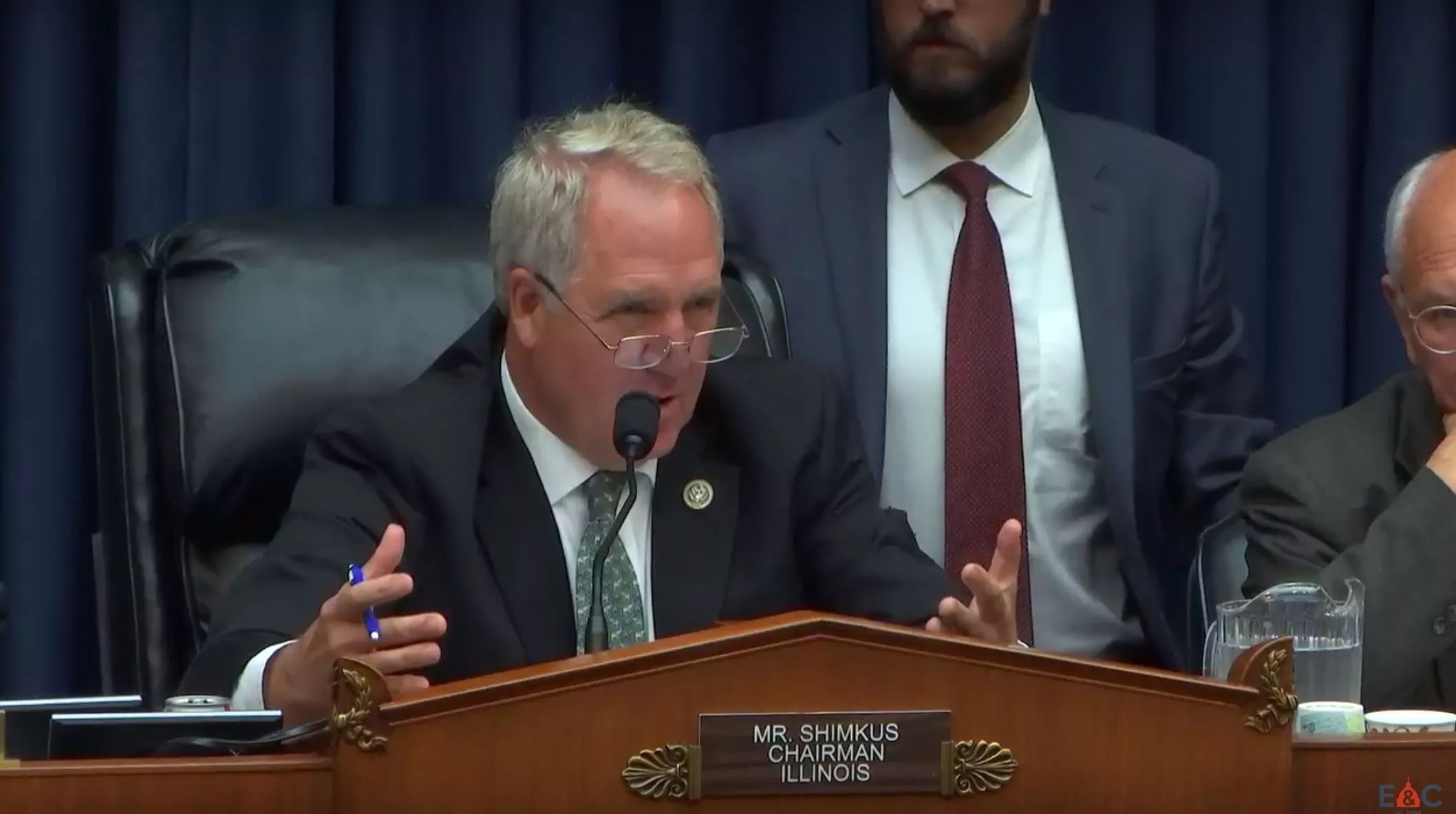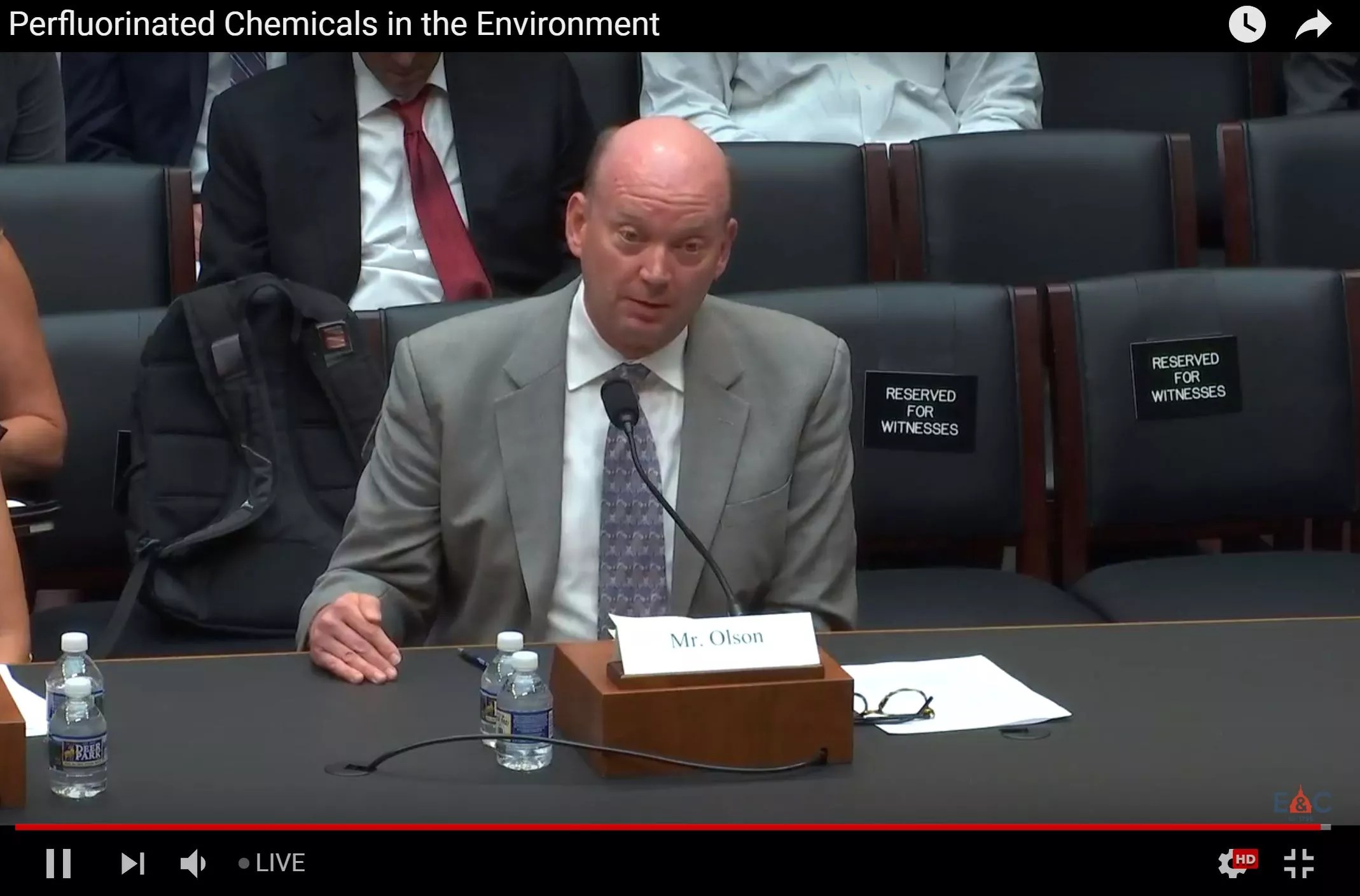
YouTube

Audio By Carbonatix
Although the majority of Americans enjoy clean drinking water, some have for decades grappled with the side effects of water contamination from per- and polyfluoroalkyl substances, or PFAS, a family of chemicals that comes from waterproofing products and firefighting foam. PFAS contamination has plagued communities across the U.S., including in El Paso County.
Despite outcry about the PFAS crisis, the Environmental Protection Agency has yet to set a legally binding maximum contaminant level for the chemicals. That might change soon.
On Thursday, September 6, the House Energy Subcommittee on Environment and Economy hosted a three-hour hearing on PFAS contamination and exposure. Democrats on the subcommittee, part of the House Committee on Energy and Commerce, are pressuring the EPA to establish a maximum contaminant level. If the EPA does not act, subcommittee members say they will propose legislation that would address contamination issues.
“There can be no more kicking the can down the road,” said Democrat Congressman Paul Tonko of New York during the hearing.
Denver, make your New Year’s Resolution Count!
We’re $17,500 away from our End-of-Year campaign goal, with just a five days left! We’re ready to deliver — but we need the resources to do it right. If Westword matters to you, please contribute today to help us expand our current events coverage when it’s needed most.
PFAS chemicals have been seeping into groundwater in El Paso County for decades, likely as the result of firefighting foam used by Peterson Air Force Base. A C8 Science Panel study from 2013, which came from a class action lawsuit against chemical companies, linked PFAS exposure to multiple diseases, including ulcerative colitis, pregnancy-induced hypertension, thyroid disease, testicular cancer and kidney cancer.
“Every family deserves to know the truth about what is going on regarding PFAS. It has been in the news and there is too little information about the health risks and ways to address it in the environment,” wrote Illinois Republican Congressman John Shimkus, chairman of the subcommittee, in a press release before the hearing.
The day before the hearing, Congresswoman Diana DeGette, a Democrat from Colorado, told Westword that she hoped the subcommittee would receive more testimony from witnesses that pointed to how harmful PFAS exposure can be. DeGette is the only Colorado legislator on the subcommittee.
“What I’m hoping we can get from the hearing is just how serious this risk is,” she said. “That would give us evidence to push for the EPA to declare a clear maximum contaminant level or for us to do legislation.”

Testimony from Erik D. Olson, Senior Director, Health and Food, Healthy People and Thriving Communities Program, Natural Resources Defense Council
Screenshot from YouTube
The EPA advisory level is currently set at 70 parts per trillion, but that’s just a suggestion. Congressman Frank Pallone, a Democrat from New Jersey, where the state’s legally binding maximum contaminant level is fourteen parts per trillion, wants the EPA to mandate a much lower level. (The Agency for Toxic Substances and Disease Registry published a report in June that showed PFAS exposure was detrimental even at levels well below 70 parts per trillion.)
“We know this level is too high to protect public health. It’s another outrageous example of the Trump administration ignoring the health needs of the American people,” Pallone said during the hearing.
Another solution is to pressure the EPA to list PFAS as a hazardous substance, which would make available an EPA superfund to pay for PFAS cleanup.
But Democratic representatives are concerned that the chemical industry will strong-arm the EPA, something it may have done this past year when it allegedly blocked the release of a chemical-hazard study by the Agency for Toxic Substances and Disease Registry that further illustrated the negative effects of PFAS.
A May 21 letter sent to former EPA head Scott Pruitt from four Democratic environment subcommittee members, including DeGette, points to January 2018 emails that appear to show some of Pruitt’s subordinates talking about a “potential public relations nightmare” for the EPA and the Department of Defense if the study was released. On January 31, the day after that email exchange, one of the participants in the email chain, Dr. Richard Yamada, deputy assistant administrator for the Office of Research and Development at the EPA, may have attended a meeting with American Chemistry Council representatives; the title of the meeting on his calendar was “ACC Cross-Agency PFAS Effort.”
“I think you can tell that Republicans and Democrats are pretty unified here on the concern about the PFAS chemicals.”
DeGette and her colleagues have questioned whether Yamada and other EPA officials gathered with chemical-company executives to possibly discuss suppressing the report.
“It’s always a concern, especially with this EPA, that they’ll be pressured by the industry,” says DeGette.
Those same industry pressures may be the reason that El Paso County residents unwittingly ingested PFAS-contaminated water for years.
The U.S. military has known since well before 2016 that PFAS exposure was linked to illness. The Army Corp of Engineers even told the Army base in Fort Carson to stop using PFAS products in 1991, according to the Colorado Springs Gazette. But that didn’t stop Peterson Air Force Base from continuing to use firefighting foam that was contaminating the nearby groundwater.
It wasn’t until May 2016, when the EPA lowered its advisory level from 400 to 70 parts per trillion, that El Paso County residents started to panic. Local water districts tested their water and found that some of it had higher levels of PFAS contamination than what the EPA recommends. The Widefield aquifer, a water source for 70,000 El Paso County residents, was one of the contaminated areas.
Residents of the affected municipalities have joined a class action lawsuit against PFAS manufacturers, formed a coalition to demand justice for the years they spent drinking the contaminated water, and hope that their aquifer will be fully decontaminated.
In response to complaints from El Paso county residents, EPA officials hosted a PFAS listening session in Colorado Springs on August 7 and 8. Residents testified about how family members have suffered from illnesses linked to PFAS exposure and demanded faster action and more attention from the EPA. Doug Benevento, EPA administrator for the Mountains and Plains region, says that since the meetings, the EPA has assigned a liaison to the community who will collect their concerns.
Residents in PFAS-contaminated areas are hopeful that the EPA will honor their requests, especially because the issue has brought together politicians from opposing sides in Congress.
“I think you can tell that Republicans and Democrats are pretty unified here on the concern about the PFAS chemicals,” said Congresswoman Debbie Dingell, a Democrat from Michigan, during the hearing.